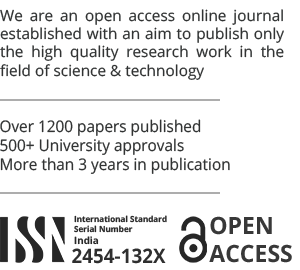Research Paper
Smart garbage monitoring system using Wireless Sensor Network
Published by: Vinay S. G., Dr. Shankaraiah, Vikas K. M., Vemula Jaswanth Krishna, Nagaraja G. R.
Full Details
Research Paper
Design and analysis of a car radiator fan assembly to mitigate the effect of aeroacoustic dipole noise
Published by: Anshuman Kumaar Singh
Full Details
Review Paper
A review on object detection from Unmanned Aerial Vehicle using CNN
Published by: Amanuel Ayalew, Dr. Pooja
Full Details
Research Paper
Comparative study of time history analysis of cold formed steel frame
Published by: Chintamani Abhishek, Nagesh Shelke
Full Details
Research Paper
Thermal flexure analysis of orthotropic plate using trigonometric shear deformation theory
Published by: Aher Aniket Balasaheb, Sanjay Kulkarni
Full Details
Research Paper
Medical wastage plastic use in concrete
Published by: Manukumar Gulabchand Goyar
Full Details
